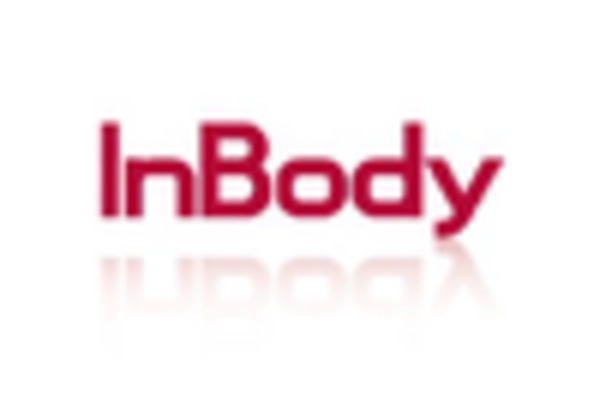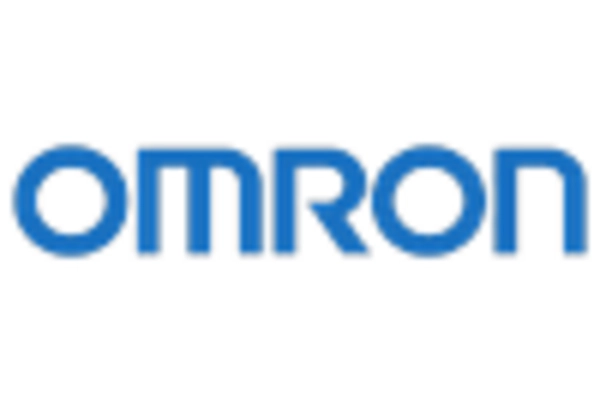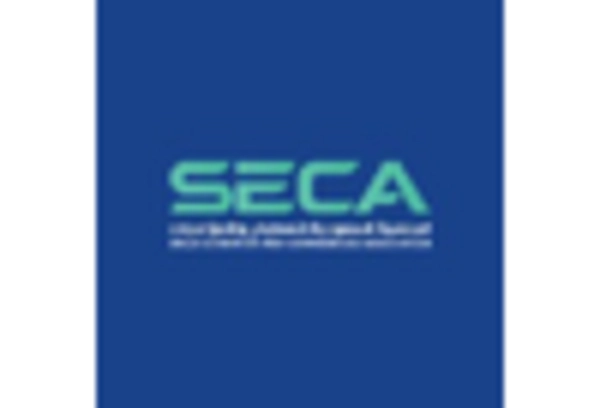The body composition-analyzers market in South America is characterized by a dynamic competitive landscape, driven by increasing health awareness and the growing prevalence of lifestyle-related diseases. Key players such as Tanita (Japan), InBody (South Korea), and Omron (Japan) are at the forefront, each adopting distinct strategies to enhance their market presence. Tanita (Japan) focuses on innovation, frequently updating its product line to incorporate advanced technologies, while InBody (South Korea) emphasizes regional expansion, targeting emerging markets within South America. Omron (Japan), on the other hand, is leveraging digital transformation, integrating smart technology into its devices to appeal to tech-savvy consumers. Collectively, these strategies contribute to a moderately fragmented market, where competition is intensifying as companies vie for market share through differentiation and technological advancements.
In terms of business tactics, companies are increasingly localizing manufacturing to reduce costs and improve supply chain efficiency. This approach not only enhances responsiveness to local market demands but also mitigates risks associated with global supply chain disruptions. The competitive structure of the market remains moderately fragmented, with several key players influencing overall dynamics. The presence of both established brands and emerging players creates a diverse environment, fostering innovation and competitive pricing strategies.
In August 2025, Tanita (Japan) launched a new line of body composition analyzers specifically designed for fitness centers, incorporating cloud connectivity features. This strategic move is significant as it aligns with the growing trend of digital health solutions, allowing fitness professionals to track client progress more effectively. By enhancing user engagement through technology, Tanita (Japan) positions itself as a leader in the fitness sector, potentially increasing its market share in South America.
In September 2025, InBody (South Korea) announced a partnership with a major health insurance provider to offer subsidized body composition analysis services to policyholders. This initiative is crucial as it not only expands InBody's reach but also promotes preventive health measures among consumers. By aligning with health insurance, InBody (South Korea) enhances its credibility and fosters a broader acceptance of body composition analysis as a vital health metric.
In October 2025, Omron (Japan) unveiled a new AI-driven body composition analyzer that provides personalized health insights based on user data. This innovation is particularly relevant in the current market, where consumers increasingly seek tailored health solutions. Omron's (Japan) focus on AI integration reflects a broader trend towards personalized healthcare, potentially setting a new standard in the industry and attracting a tech-oriented consumer base.
As of November 2025, the competitive trends in the body composition-analyzers market are increasingly defined by digitalization, sustainability, and the integration of AI technologies. Strategic alliances, such as partnerships between technology firms and health service providers, are shaping the landscape, enhancing product offerings and consumer engagement. Looking ahead, competitive differentiation is likely to evolve from traditional price-based competition towards a focus on innovation, technological advancements, and supply chain reliability. Companies that can effectively leverage these trends will likely secure a competitive edge in the rapidly evolving market.


















Leave a Comment